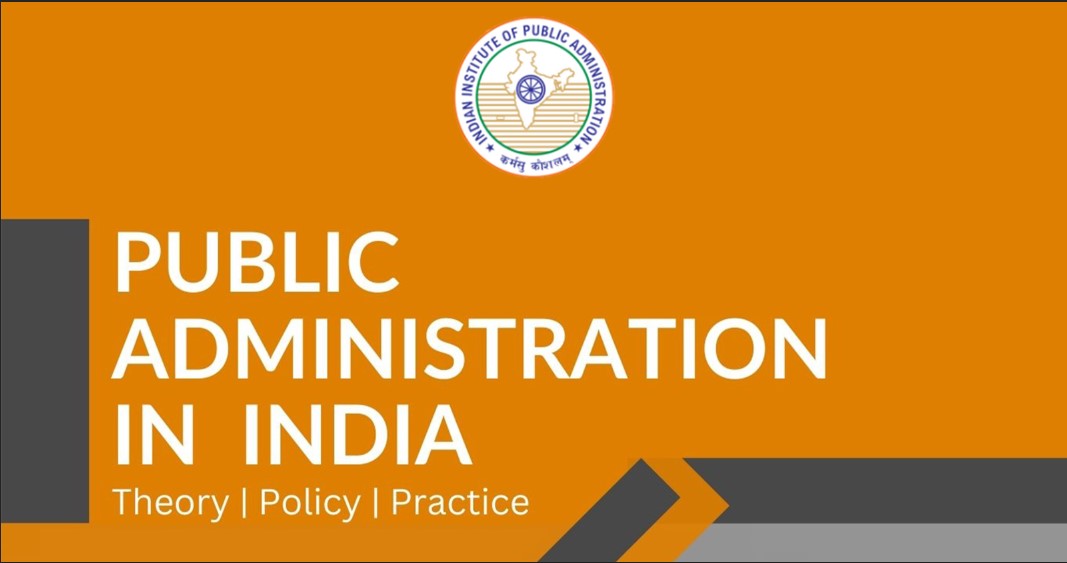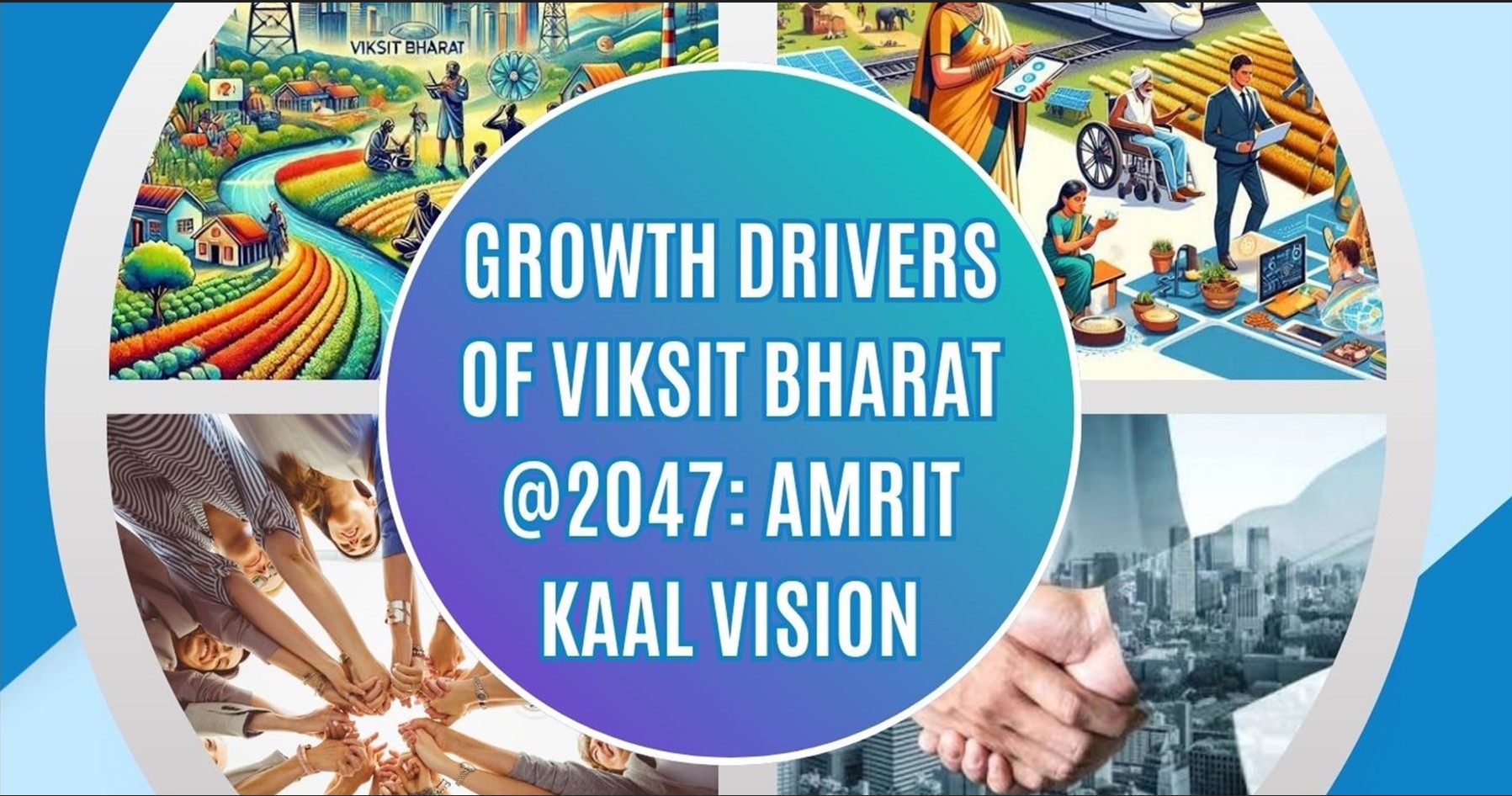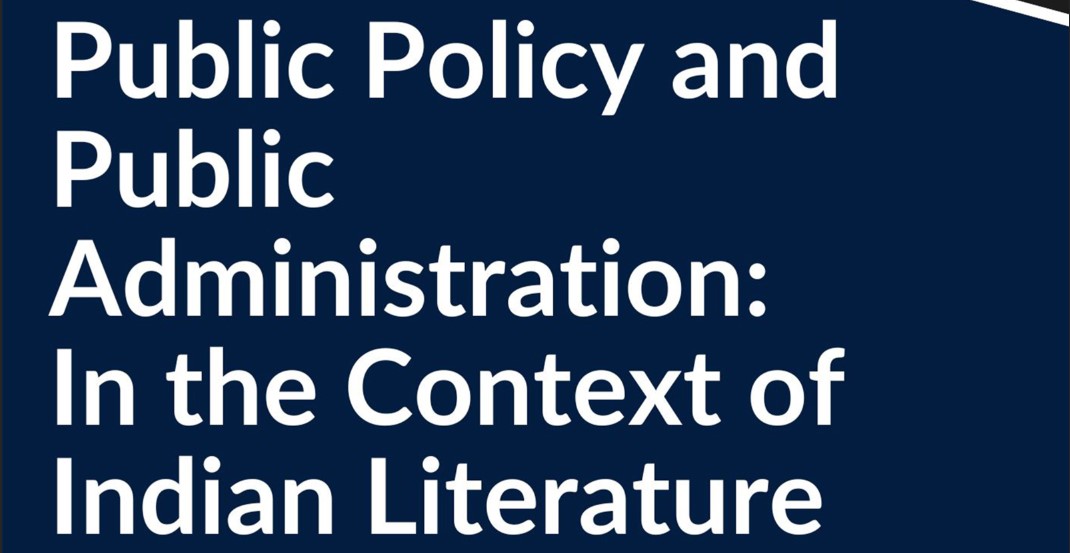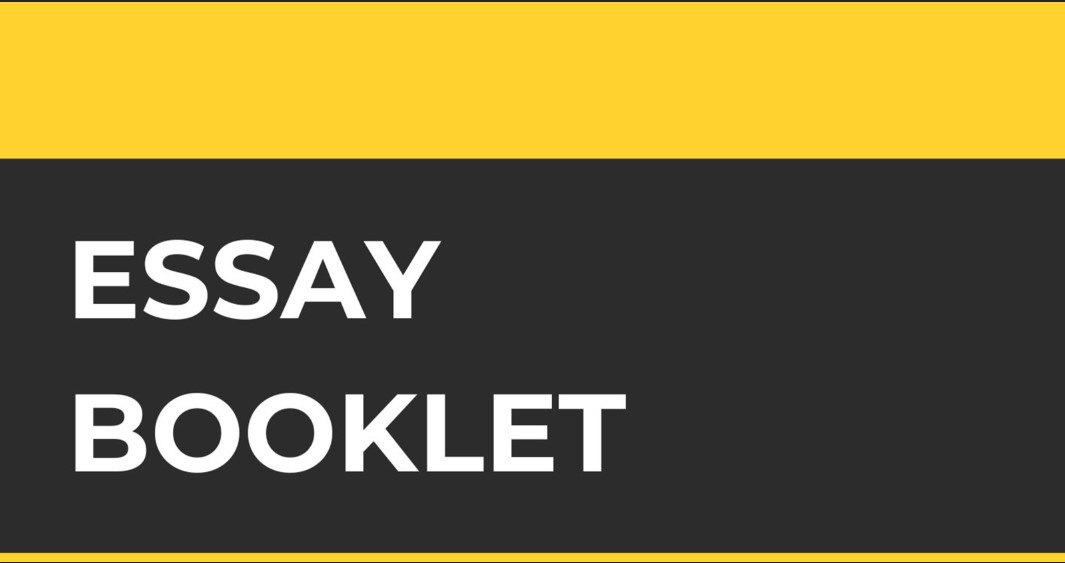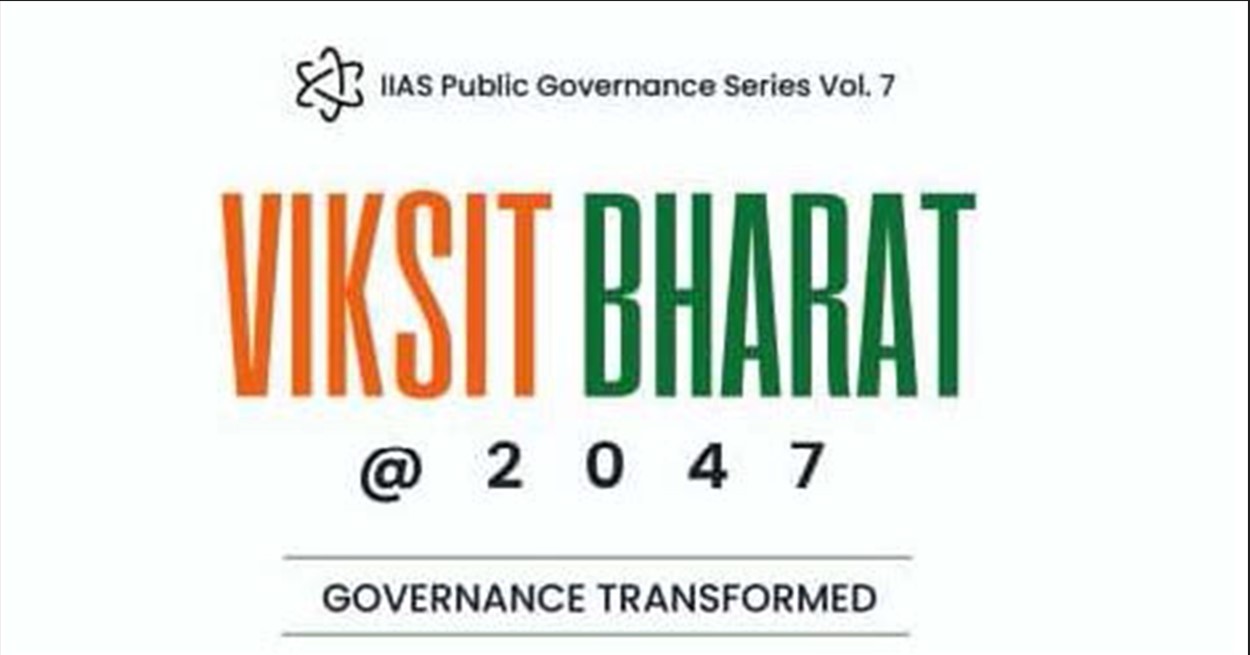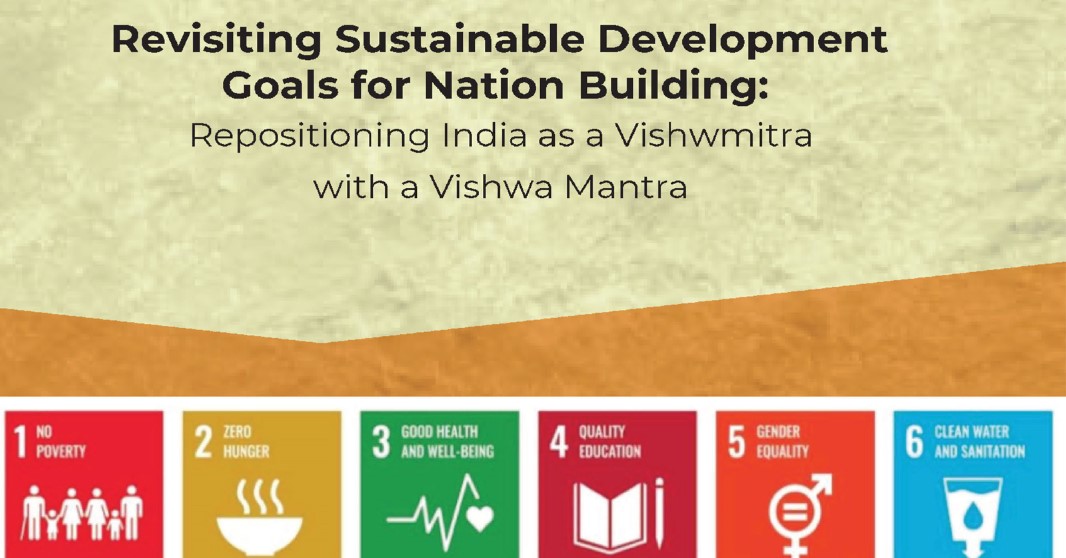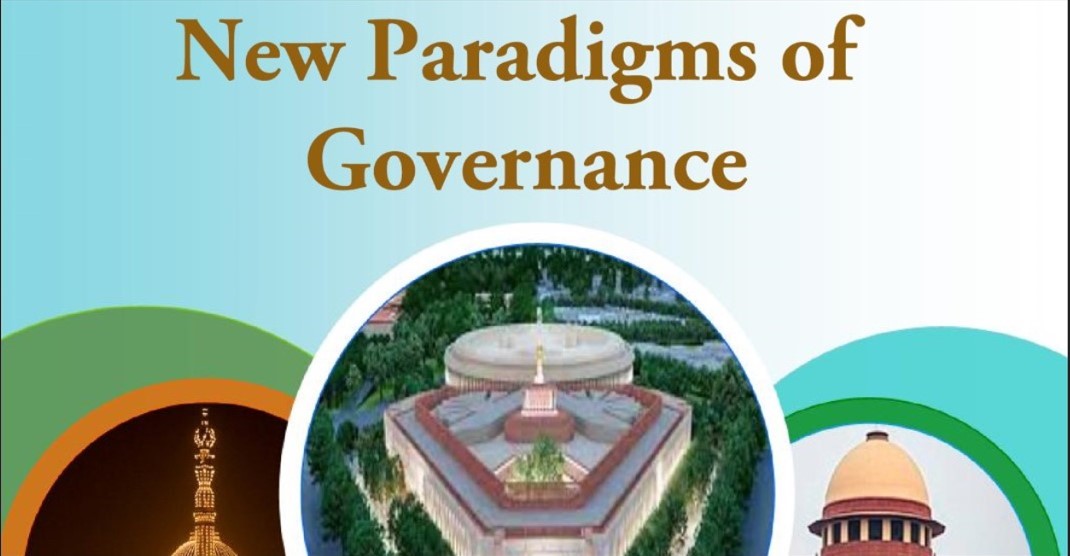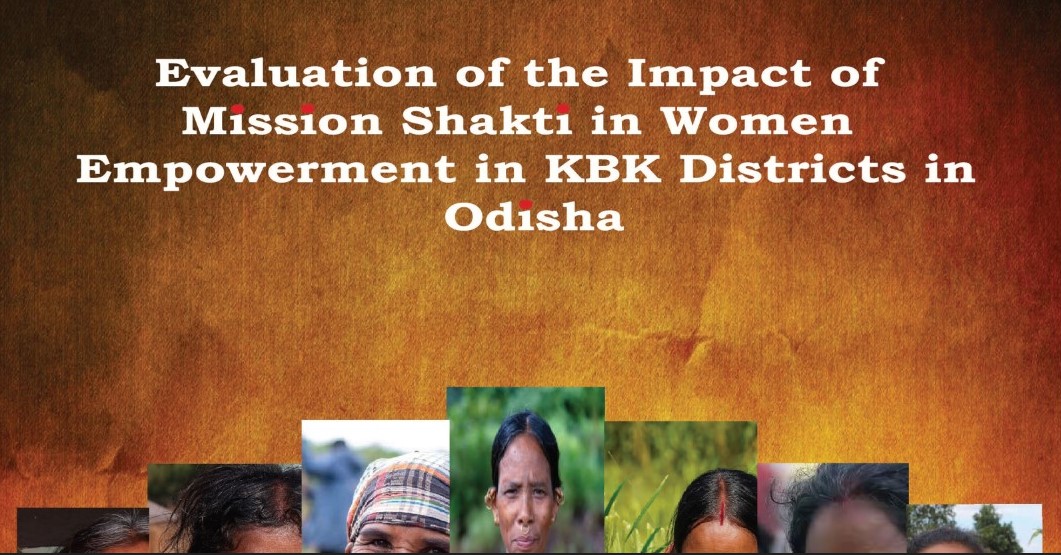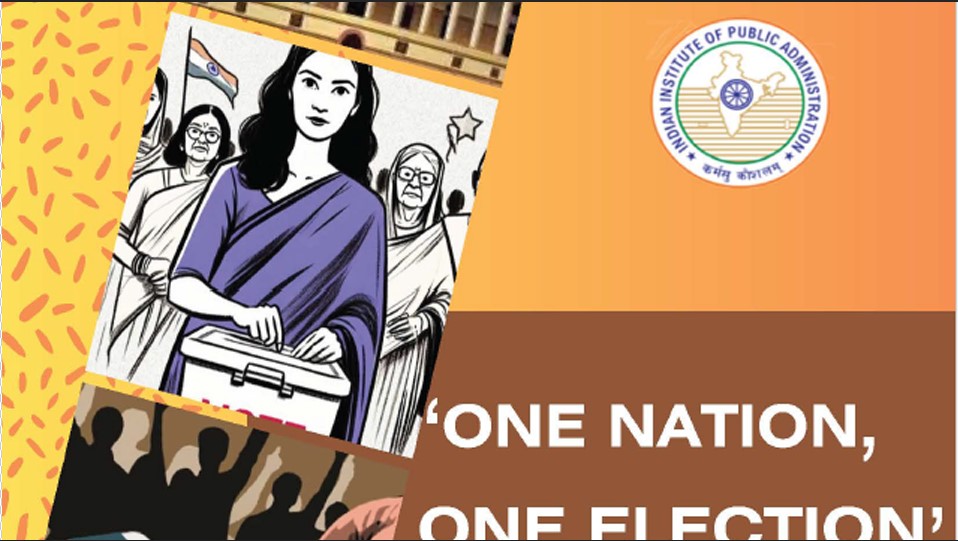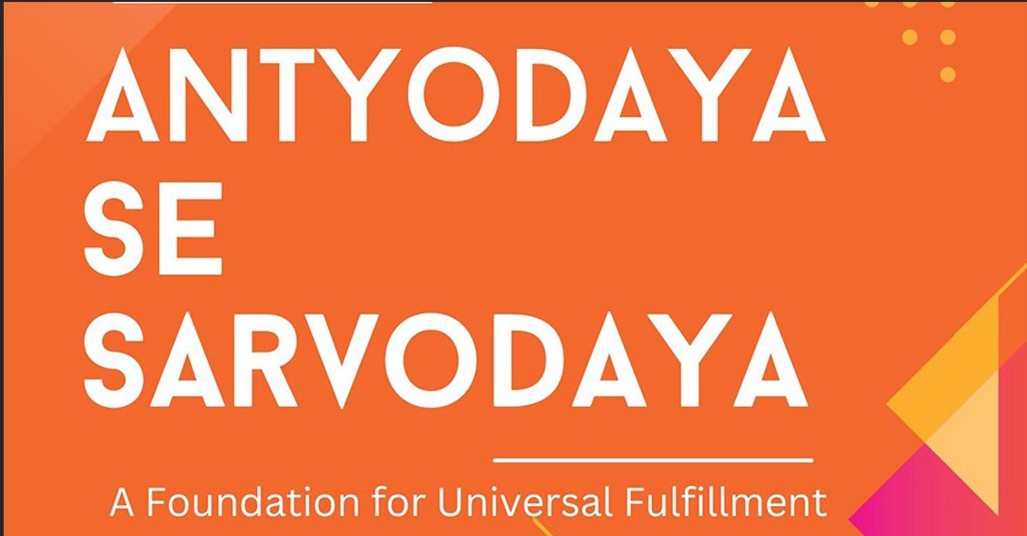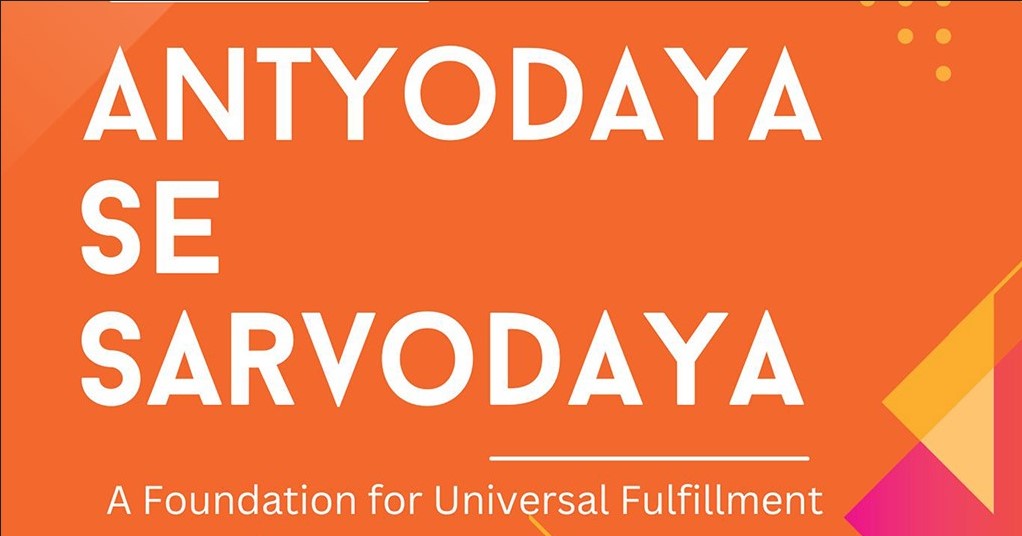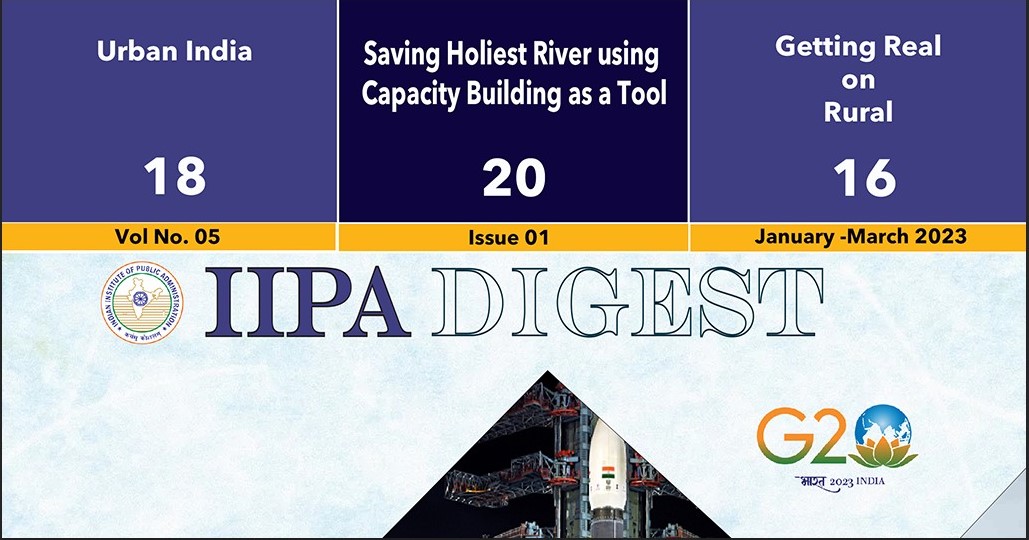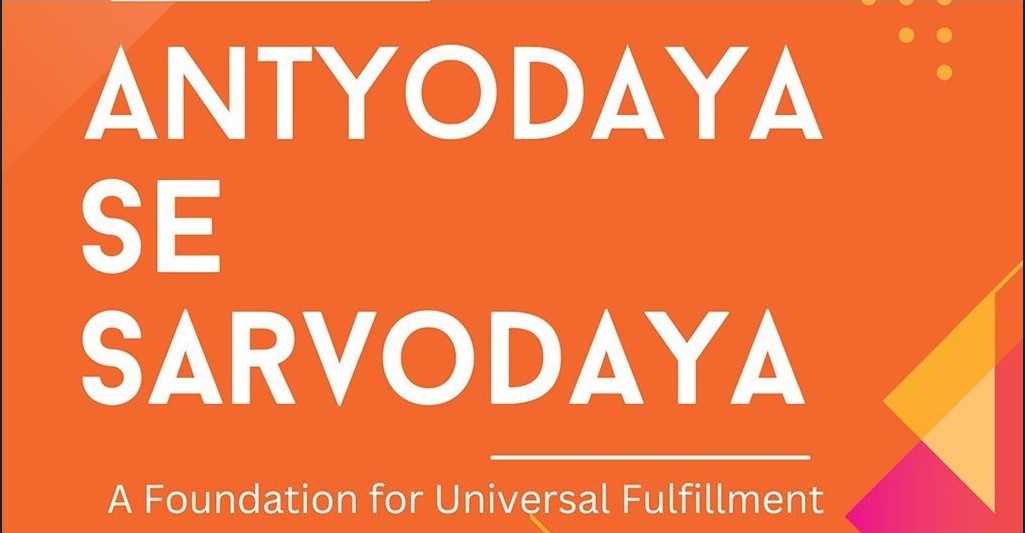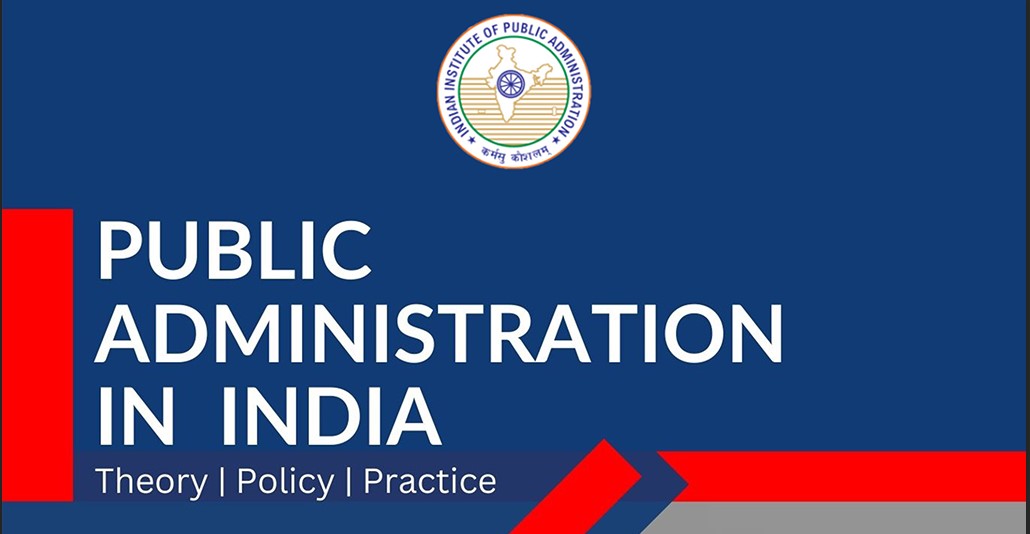Public Institution and Government
Introduction
Ancient Indian regional literature describes a wide range of public institutions that combined decentralized participatory governance with centralized monarchy, reflecting moral teachings such as rajadharma (kingly duty) and dharma (righteous duty). Examining ancient India’s public institutions and governance reveals a dynamic and intricate web of diverse governing structures that developed in various locales and eras. In contrast to the perception of a single administrative structure the polity of ancient India was significantly influenced by regional traditions social structure religious beliefs and literary expression (Sharma 1959 ,Thapar 2002).
Regional literature including the Tamil Sangam Literature, Telugu and Kannada inscriptions and Bengal’s Gaudiya works provides distinct insights into how local communities structured governance. These sources document the traditions of assemblies, councils and civic participation; demonstrating a vibrant ecosystem of institutions that both complemented and restrained royal power (Zvelebil 1973, Pillay 1975). For example, Sangam poetry and prose celebrate the function of village assemblies and councils (sabhas-sangams) in resolving disputes and forming policies in addition to documenting the actions of monarchs. The complex operations of republican states like the Licchavis where assemblies made important decisions collectively are recalled in texts from northern and central India (Thapar 2002 , Rangarajan 1992 ,Sen 2006).
Regional literary traditions provide contemporary scholars with invaluable perspectives on leadership administration law and the relationship between the state and society, shedding light on the complex nature of governance throughout the Indian subcontinent (Mukherjee 1980 ,Ray 2010, Zvelebil 1973 , Pillay 1975). Statecraft ethics and religion were all woven together in the pragmatic political philosophy of ancient India.
Danda Niti, the science of governance placed an emphasis on justice protection and welfare whereas the idea of Rajadharma dictated obligations and responsibilities for rulers (Kangle 1965 Sharma 1959 Thapar 2002).
Republican states that practiced participatory governance deliberative institutions and debates included Vaishali. Elective kingship assemblies where policy was negotiated rather than dictated and democratic practices are all described in texts from different regions (Thapar 2002 , Ray 2010). According to Ray (2010), Panchayats and consultative councils are still relevant in contemporary Indian governance structures because of the influence of ancient political theories on administration justice and welfare. Buddhist and Jain texts like the Dhammapada and Acharanga Sutra depict monastic assemblies (sangha) in Magadha and Karnataka as community centers where monks and lay followers resolved disputes and promoted non-violence (ahimsa) indirectly influencing rulers through ethical counsel (Dundas 2002).
The Rigveda and Atharvaveda describe early assemblies the sabha (executive/judicial council) and samiti (general body) where tribal chiefs and community representatives discussed war resource distribution and welfare. The kings court (supreme appellate body), local courts (kantaka-sodhana) and village tribunals were among the judicial institutions described in Manusmriti and Kautilyas Arthashastra. These courts operated through four stages of trials - imposed punishments based on class and offense with the authority to fine or exile kings (Olivelle 2009, Lorenzen 1995).
By encouraging participation these institutions balanced community agency with royal power and promoted governance based on welfare justice and cultural harmony. In addition to the official systems of governance, the literary also recorded the accounts the daily struggles of diverse communities for welfare and justice.
Governance and Public Institutions in Ancient India through the Lens of Sanskrit Texts
Through their philosophical discourses, hymns and rituals; the Vedas and Upanishads; the oldest works of Sanskrit literature lay the foundation for government and public institutions. According to these, early societies had assemblies called sabha (judicial/executive council) and samiti (general assembly) where chiefs and elders discussed issues like resource distribution war and justice.
These organizations encouraged consensus-based decision-making by giving community representatives the authority to choose leaders and uphold traditions (Sharma 2005). In the Vedas governance was centered on the well-being of all people. Phrases such as Sarve Bhavantu Sukhinah (may all be happy) encouraged rulers to maintain peace and prosperity. Fair taxation and trade regulation were part of economic administration and kings who safeguarded trade and agriculture were praised in hymns.
The Upanishads describes organizations that ensure ethical oversight in administration such as spiritual assemblies (Dharma Sabha) and advisory councils of learned scholars (Vidhya Sabha). In order to preserve social harmony, dharma-guided punishments were used in public forums to administer justice. According to literature, the Vedic governance was decentralized with village councils managing local affairs.
Throughout Sanskrit texts, Dharma, the moral order that governs people communities and rulers repeats frequently. Even though Rajan, the king has absolute power, he is constantly reminded to rule according to Dharma emphasizing justice welfare and peace. The king (Rajan) whose power was both political and moral was at the top of the political structure. He was given the responsibility of protecting property life and the cosmic order of Dharma (Jois 2017). This position was much more than merely symbol, it carried real expectations for the subjects’ well-being such as maintaining justice, peace, economic expansion and defense against outside threats.
Prior to making important decisions, kings were also expected to discuss with assemblies, ministers and priests (purohits) highlighting the collaborative nature of governance according to Kautilya. Ministerial Council or Mantri Parishad, was n essential part of the state. In crucial areas like finance, defense, international relations and legal administration, this body was in charge of providing assistance. The selection of ministers was to be based on merit, integrity, wisdom and loyalty and not ancestry according to the Arthashastra .
In order to prevent pure autocratic rule, the council acted as a vital check on power (Kosambi 1965).
According to the Saptanga or Seven Limbs of the State theory, introduced in the Arthashastra a functioning polity must have seven essential elements: the ruler (swamin) ministers (amatya) territory and people (janapada) forts (durga) treasury (kosha) army (danda) and allies (mitra). Ancient Indian thinkers understood that a weakness in any one limb could jeopardize the entire state apparatus as demonstrated by the Saptanga framework.
According to Sanskrit sources there were strong local self-governing institutions in place even though kings and councils functioned at the federal level. The Sabha and Samiti were popular assemblies that participated in community governance judicial arbitration and policymaking they are mentioned in Vedic literature (Thapar 2004).
At the village level revenue collection, justice and dispute resolution were supervised by the Panchayat, which was normally made up of five esteemed elders (Chowdhury 2024). These councils which operated mainly independently of direct royal intervention were given the authority to administer public works projects collect taxes and settle disputes.
The legal codes of ancient India established broad guidelines for the administration of justice. As the highest court, the king was constrained by Dharma and was supposed to confer with learned councils and Brahmin jurists before rendering decisions (Kosambi 1965, Jois 2017).
Two fundamental views of Sanskrit literature viz. Raj Dharma and Vyavahara Dharma, established the moral obligations of leaders and officials. The kings responsibilities under Raj Dharma were to uphold impartial administration safeguard the most vulnerable members of society and punish transgressions of Dharma .
Vyavahara Dharma directed officials in their judicial and administrative duties and referred to the corpus of practical law that governed contracts property trade and day-to-day living (Jois 2018).
Literary Exploration: Evidences from Dravidian Literature
Ancient South Indian public institutions are depicted in a sophisticated manner in Dravidian literature which reflects a culture of social justice local autonomy and participatory governance. Classical Tamil sources demonstrate the administrative complexity and civic values that set apart Dravidian polities and they are backed by inscriptional and literary evidence in Kannada Telugu and Malayalam (Pillay 1975, Zvelebil 1973, Ray 2010).The establishment of specialized committees village assemblies and royal councils among other organizations promoted community involvement limited the authority of the central government and established long-lasting customs of self-government.
Sangam Literature
Manimekalai and Silappathikaram are praised for codifying laws and regional governance in addition to their literary value (Pillay 1975, Zvelebil 1973). Tamil Sangam literature including Purananuru and inscriptions such as the Uttaramallur agreements emphasize the importance of mahasabha (multi-village assemblies) and urar (multi-caste village bodies) which oversaw public works irrigation and temples through subcommittees (Narayanan 2016).
In addition to defending citizens rights and serving as a bridge between the monarch and his subjects, these councils provided political and strategic direction. The executive advisory body known as Aimperunkulu or the Great Five was made up of the spy master (Maraiyavan), army commander (Senapati) ,chief minister (Amaichar) ,envoy (Thuthan) and chief priest (Andan). Their responsibilities included intelligence gathering administration finance military affairs and diplomacy (Pillay 1975). Enperayam or the Great Eight is a council of eight officials who were in charge of the administration justice treasury recordkeeping and public safety according to later literature (Zvelebil 1973).
The Ur (General Assembly) served as a village-level council where non-Brahmin elders discussed issues such as resource management, community welfare and legal disputes. Village-level cultural customs and social norms were preserved with the aid of this organization (Aiyangar 1941). Assemblies of traders and craftspeople oversaw market regulation, tax collection, urban infrastructure, and commerce under the Nagaram (Merchant Guild) (Ramaswamy 2017, Ray 2010).
Inscriptions and writings from the Chola era such as Periyapuranam outline their power to impose taxes and uphold law and order (Pillay 1975). Specialized subcommittees or variyams. Committees such as thottavariyam (garden management), niyayavariyam (justice), ponvariyam (finance), erivariyam (water resources), and dharma variyam (religious and charitable endowments) are some examples of the variyams mentioned in Chola and later medieval Tamil sources.
Community involvement and targeted governance were guaranteed by these subcommittees (Pillay 1975). Members and elected headmen (jetthaka) voted on regulations and maintained military forces (sreni-bala) providing them considerable economic and judicial autonomy unless it went against dharma (Thapar 2002).
Kannada Literary Institutions
According to early Kannada texts like Kavirajamarga, the royal courts served as hubs for debate and literary production bolstered by dynasties such as the Chalukyas and Rashtrakutas. Basavanna established the Anubhava Mantapa a proto-democratic platform for philosophical ethical and group decision-making demonstrating how Veerashaiva institutions later promoted open meetings.
Literature by Basavanna Akka Mahadevi and Allama Prabhu encouraged spiritual equality community involvement and social justice discourse. According to Poojn 2025, their poetry frequently describes village councils and debate halls as hubs of vibrant interaction.
Telugu Literary Institutions
Both royal patronage and the growth of village and temple assemblies influenced Telugu literature starting in the ancient India.
Telugu inscriptions and poetic writings frequently describe temple councils or sabhas which served as important local decision-making bodies and oversaw land grants festivals and education (Sarma 2018).
Telugu village panchayats were in charge of revenue collection. local justice and resource distribution. According to Sarma (2018), literature like Palnati Vira Charitra mentions court cases and land disputes settled by these councils.
Asthanams or royal courts provided support to poets and academics by holding public discussions and literary competitions that were essential to cultural life (Rao 2002).
The council of Brahmin elders known as the Sabha (Brahmin Assembly) is charged with carrying out judicial and religious duties including overseeing ceremonies and deciding on customs. With its help social norms and cultural practices at the village level were maintained (Aiyangar 1941).
The Nagaram or Merchant Guild was in charge of overseeing market regulation tax collection, urban infrastructure and commerce through assemblies of traders and craftspeople. Inscriptions and literary allusions to the Nagaram show its autonomy and self-control (Ramaswamy 2017).
In Kerala kings and nobles entertained scholars for debate and performance which promoted intellectual development and intellectual exchange Usually connected to large temples, the Yogams served as both administrative and spiritual councils. According to Menon (1967) they oversaw community welfare festivals and property.
Literary Mirrors of Power: Governance Depictions in Jain, Buddhist, and Bhakti Texts
Jain, Buddhist, and Bhakti literature represent key non-Brahmanical traditions in ancient India, each offering unique perspectives on governance, ethics, and social order. Buddhist texts emphasize compassion and non-violence in statecraft, Jain literature promotes restraint and moral law, while Bhakti poetry critiques hierarchy and corruption.
These literatures were not mere spiritual guides but active forces in shaping political thought. For instance, Buddhism influenced emperors like Ashoka, promoting policies of non-violence and welfare. Jainism impacted dynasties such as the Mauryas and Chalukyas, integrating ethical principles into law. Bhakti poets like Kabir and Basavanna provided moral critiques that pressured rulers for reform. This article elaborates on these influences, drawing on historical and academic analyses to demonstrate how these traditions fostered community-driven, ethically grounded governance. By examining key texts and their historical contexts, it underscores their relevance to contemporary discussions on inclusive politics in India.
Jain Literature
Governance is portrayed in texts like the Agamas and commentaries as having its roots in moral group and self-control. Jainism supported sanghas or monastic assemblies which served as autonomous entities that used discussion and consensus to decide on matters of discipline resource management and doctrinal interpretation. The lay communities (shravaka sanghas) that oversaw temples communal funds and festivals were also included in these assemblies. The ideal of governance based on morality rather than hierarchy was reflected in the expectations placed on laypeople and monks alike to uphold truth welfare and non-violence (ahimsa).
The Jain scriptures provide a clear directive for the administration of justice requiring officials to speak the truth, render fair decisions and enforce justice impartially. The best leaders and officials should abstain from personal development, behave honorably and provide resources to the community fairly.
The five core vows viz. non-violence (ahimsa) ,truth (satya), non-stealing (asteya), celibacy (brahmacharya) and non-possessiveness (aparigraha) were not only guidelines for monastic life but also standards that lay leaders and monarchs were expected to follow in their public life and governance (Dundas, 2002).
Jainism encouraged education charity and peace in statecraft and kings financed libraries and temples. Jain kingship was modeled after the Adipurana by Jinasena and the Nitivakyamrtam by Somadeva Suri which balanced spiritual and pragmatic rule.
Policies like vegetarianism and animal welfare under Chalukyas and Solankis which reduced warfare and encouraged pluralism are clear examples of this influence. The emphasis on moral rectitude and non-violence that Jainism has left behind in governance has influenced regional polities to place a higher priority on justice and welfare than power.
Buddhist Literature
A collection of verses known as the Dhammapada encourages moral governance by its rulers stating that one should feel for others as for oneself, which reflects an ethic akin to the Golden Rule that forbids violence and advances justice.
In order to be in accordance with dhamma (law or righteousness), this text minimized punitive measures and emphasized the necessity of establishing guilt before punishment. With an emphasis on social customs etiquette and institutional norms it contains guidelines for monks and nuns narrative commentary and dispute resolution principles.
The Buddhist literature left a legacy in Indian political philosophy by influencing a governance model centered on morality non-violence and welfare. Buddhist writings particularly the Vinaya Pitaka and sutta literature shed light on public institutions by examining early republican clan-states and monastic communities (Sanghas).
To oversee daily operations within the monastic order the Buddha instituted comprehensive administrative regulations including elections group gatherings and legislative actions. With regular assemblies to settle conflicts uphold discipline and oversee resources the Sangha functioned as a self-governing republic.
Buddhist texts encourage rulers to become Dhammarajas or kings who rule by dharma (righteousness) non-violence compassion and justice. Their advice reflected values for public officials in society at large and advised them to abstain from tyranny abuse of power and discrimination (Wikipedia 2009).
Bhakti literature
Bhakti texts which were written in regional languages by poets such as Kabir, Mirabai and Tukaram democratized spiritual engagement by dismantling caste divisions and promoting the worth of every person irrespective of background. The creation of charitable kitchens (langars), community meetings and the singing of devotional songs (kirtans); promoted unity and inclusive decision-making. These congregations modeled grassroots public institutions by assuming roles in welfare conflict resolution and community support. Bhakti poets frequently criticized inequality and corruption and pushed for leaders of communities and rulers to embrace policies of compassion justice and inclusion. By opposing caste corruption and hierarchy the literature of the Bhakti movement in vernacular languages promoted social equality and moral dissent while criticizing governance.
Conclusion
Ancient Indian public institutions and governance took many different forms and were always dedicated to adaptation consensus and participation. Scholars can examine the vibrancy and inclusivity of Indian political traditions through the lens of regional literature which includes Tamil Sangam works, Sanskrit treatises and local records.
In addition to recording the administrative realities of ancient India , these body of work established guidelines for moral and efficient government. Texts from the Jain Buddhist and Bhakti traditions all urged public servants to adopt moral leadership, which is characterized by honesty ,compassion, non-violence, accountability and service to everyone. They demanded that social justice and the general welfare be given precedence over individual or institutional privilege as well as consultative participatory governance.
References
1. Aiyangar, S. K. (1941). Ancient Indian Polity. University of Madras.
2. Chowdhury, S. (2024). Ancient India's Democracy: Blueprint for Democratic Leadership Practice. https://indialeadersforsocialsector.com/ancient-india-democracy-leadership-blueprint/
3. Dundas, P. (2002). The Jains (2nd ed.). Routledge.
4. Jois, M. R. (2017). Dharma and Governance in Indian Tradition. FINS India. https://www.finsindia.org/good-governance-in-indian-statecraft-diplomacy-and-polity-through-prism-of-ancient-indian-literature.html
5. Jois, M. R. (2018). Good Governance in Indian Polity. FINS India.
6. Kangle, R. P. (1965). The Kautiliya Arthasastra, Part III: A study. University of Bombay.
7. Kosambi, D. D. (1965). An Introduction to the Study of Indian History. Popular Prakashan.
8. Lorenzen, D. N. (1995). Bhakti religion in North India: Community identity and political action. State University of New York Press.
9. Menon, A. S. (1967). A Survey of Kerala History. DC Books.
10. Mukherjee, R. (1980). The rise and fall of the east India company. Popular Prakashan.
11. Narayanan, M. G. S. (2016). Perumals of Kerala: Political and social conditions of Kerala under the Cera Perumals. Thrissur: CosmoBooks.
12. Olivelle, P. (2009). The law code of Manu. Oxford University Press.
13. Pillay, K. K. (1975). A social history of the Tamils. University of Madras.
14. Ramaswamy, V. (2017). Public Administration in Ancient India. In M. Kaul & S. N. Mishra (Eds.), Indian Administration: Retrospect and Prospect (pp. 41–64). New Delhi: Academic Foundation
15. Rangarajan, L. N. (1992). Kautilya: The Arthashastra (Translated with notes). Penguin Books.
16. Rao, S. (2002). Telugu Literature. Sahitya Akademi.
17. Ray, R. (2010). Leadership and local governance in historical India. Oxford University Press.
18. Sarma, M. V. (2018). History of Telugu Literature. Emesco Books.
19. Sen, A. (2006). The Argumentative Indian: Writings on Indian History, Culture and Identity. Penguin Books
20. Sharma, R. S. (1959). Aspects of political ideas and institutions in ancient India. Motilal Banarsidass.
21. Sharma, R. S. (2005). India’s ancient past. Oxford University Press.
22. Thapar, R. (2002). Asoka and the decline of the Mauryas. Oxford University Press.
23. Thapar, R. (2002). Early India: From the Origins to AD 1300. University of California Press.
24. Thapar, R. (2004). The Early Indian State and the Problem of feudalism. Oxford University Press.
25. Zvelebil, K. (1973). The smile of Murugan: On Tamil literature of South India. Brill.
Bibliography
1. Ancient Indian Political Thought - Tripura University. https://tripurauniv.ac.in/site/images/pdf/StudyMaterialsDetail/POLS-701C-Ancient%20Indian%20Political%20Thought.pdf
2. History of Jainism. (2007, October 17). In Wikipedia. https://en.wikipedia.org/wiki/History_of_Jainism
3. Indian Political Thought (Ancient and - Srikrishna College. (n.d.). https://www.srikrishnacollegebagula.ac.in/StudyMaterial/0845Study%20Material.pdf
4. Kannada literature. (2004, July 27). In Wikipedia. https://en.wikipedia.org/wiki/Kannada_literature
5. Karnataka PSC Notes. (n.d.). Literature in Medieval Karnataka. https://karnataka.pscnotes.com/karnataka-history/literature-in-medieval-karnataka/
6. Kautilya. (1915). Arthashastra (R. Shamasastry, Trans.). Bangalore Government Press.
7. Manusmriti. (trans. Olivelle, P.).
8. Medieval Kannada Literature. (2007, June 23). In Wikipedia. https://en.wikipedia.org/wiki/Medieval_Kannada_literature
9. Olivelle, P. (2013). King, governance, and law in ancient India. Oxford University Press.
10. Olivelle, P. (2013). King, governance, and law in ancient India: Kauṭilya’s Arthashastra. Oxford University Press.
11. Poojn. (2025, April 1). Karnataka's Literature and Language: A Historical Journey. https://www.poojn.in/post/22470/karnatakas-literature-and-language-a-historical-journey
12. Poornaprajna Publication. The Greatness of Kannada as a Distinctive Language. https://poornaprajnapublication.com/index.php/pijpl/article/download/101/82
13. Sharma, R. S. (2003). Introduction to ancient Indian political thought. Motilal Banarsidass.
14. Socio-Political and Administrative History of Ancient India. (n.d.). https://ddceutkal.ac.in/Syllabus/MA_history/paper-10-N.pdf
15. UNIT 20 JAINISM AND BUDDHISM - eGyanKosh. https://egyankosh.ac.in/bitstream/123456789/21705/1/Unit-20.pdf
16. Valmiki. (various translations). Ramayana.
17. Vyasa. (trans. Olivelle, P.) Mahabharata, Shanti Parva.
Leave a comment
More articles from Governance & Polity
